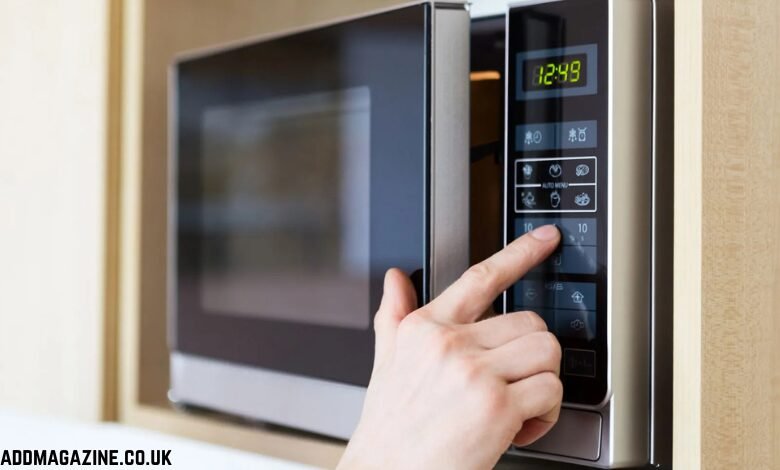The microwave, often affectionately referred to as a “microwey” by some, is one of the most common and essential appliances in modern kitchens. Whether it’s used for reheating leftovers, cooking a quick meal, or defrosting frozen food, the microwey has made food preparation faster, easier, and more convenient. But while its widespread use makes it a household name, many people might not fully understand how it works or where it came from. In this post, we will explore the history, functionality, and diverse uses of the microwey, shedding light on how this appliance continues to impact daily life.
The Birth of the Microwey
The invention of the microwave, or “microwey,” as it is sometimes affectionately called, began in the 1940s. Percy Spencer, an engineer at Raytheon, is credited with its discovery. While working on radar equipment during World War II, Spencer noticed that a candy bar in his pocket had melted due to exposure to microwave radiation. This sparked his curiosity, and he began experimenting with the use of microwave radiation to heat food.
By 1945, Spencer had created the first microwave oven, which was known as the Radarange. This initial design was large, bulky, and expensive, making it impractical for home use. It was mostly used in commercial kitchens and industries, where its ability to quickly heat food was a valuable asset. Over time, the microwave’s design evolved, and smaller, more affordable models were introduced for home kitchens.
The Evolution of the Microwey
In the 1970s and 1980s, the microwey began to make its way into more households. Moreover, thanks to advances in technology, these early models became more compact and affordable, and microwey ovens started appearing on kitchen counters across the world. Furthermore with the introduction of features like pre-programmed settings, defrost options, and a variety of power levels, the microwey became more versatile and easier to use for everyday cooking.
As the years passed, microwey ovens continued to evolve, with models now offering even more advanced features like convection cooking, grilling, and smart technology integration. Today, the microwey is an indispensable appliance in many kitchens, valued for its convenience and speed.
How Does a Microwey Work?
At the core of every microwey is the use of microwave radiation to heat food. These microwaves are a form of electromagnetic radiation, which means they are a type of energy that travels through the air in waves. When food is placed inside the microwey, the microwave radiation is absorbed by the water molecules in the food. This causes the water molecules to vibrate rapidly, generating heat in the process, which cooks the food.
The microwey itself contains several key components:
- Magnetron: This is the device that generates the microwave radiation. It transforms electrical energy into microwave radiation, which is then channeled into the cooking chamber to heat the food.
- Waveguide: Once the microwaves are generated, they are channeled through a metal tube known as a waveguide, which directs them into the cooking space.
- Turntable: Most microwey models include a rotating turntable that ensures the food is cooked evenly. As the turntable rotates, the microwaves are distributed more uniformly, reducing the likelihood of hot spots.
- Control Panel: Modern microwey ovens come with a digital control panel that allows users to adjust cooking times, power levels, and select preset cooking programs for different foods.
- Safety Features: To ensure the microwave is safe to use, microwey ovens include several safety features, such as automatic shutoffs if the door is opened while the oven is in operation.
Different Types of Microweys
Microwey ovens come in various designs to suit different kitchen layouts and cooking needs. Some of the most common types include:
- Countertop Microwey: These are the standard microwey models that sit on the kitchen counter. They are available in various sizes and power levels, offering flexibility for different households.
- Over-the-Range Microwey: Installed above the kitchen stove, these models help save counter space. Many of these microwey ovens come with built-in ventilation systems to remove smoke and odors from cooking.
- Built-in Microwey: A built-in microwey is integrated into kitchen cabinetry, offering a sleek and seamless look. These models are often more expensive and require professional installation.
- Microwey Drawer: A newer innovation, the microwey drawer is installed under the kitchen counter in a pull-out drawer configuration. This type offers space-saving benefits and is gaining popularity in modern kitchens.
- Microwey Convection Oven: These hybrid models combine microwave and convection heating, allowing for faster cooking and the ability to bake, roast, and grill food in addition to the typical microwave functions.
Benefits of Using a Microwey
There are several reasons why the microwey has become a mainstay in kitchens worldwide. Some of the key benefits include:
- Speed: Microwey ovens are known for their speed. Cooking or reheating food in a microwey typically takes only a fraction of the time compared to traditional cooking methods, making it ideal for busy individuals or families.
- Energy Efficiency: Microwey ovens are more energy-efficient than traditional ovens because they only heat the food and not the entire oven cavity. This can help save on energy costs and reduce cooking time.
- Preservation of Nutrients: Since microwave cooking often uses less water than methods like boiling, it can help preserve the nutrients in food, making it a healthier cooking option for many.
- Ease of Use: With simple control panels and preset options, using a microwey is straightforward. Even those with minimal cooking experience can easily reheat, cook, or defrost food with the push of a button.
- Compact Size: Microwey ovens are small and portable, taking up less space than traditional stoves or ovens. This makes them a great choice for small kitchens, apartments, or dorm rooms.
Common Uses of the Microwey
The versatility of the microwey makes it ideal for a variety of cooking tasks. Some of the most common uses include:
- Reheating Leftovers: One of the most popular uses for a microwey is reheating leftovers. From soups and casseroles to pizza slices and rice, the microwey can quickly heat food to the right temperature.
- Cooking Frozen Foods: Microwey ovens are perfect for preparing frozen meals. Whether it’s frozen dinners, frozen vegetables, or frozen pizza, the microwey provides a quick and convenient way to cook frozen foods.
- Defrosting: The defrost feature in many microwey ovens allows users to safely and efficiently thaw frozen food, such as meat, poultry, or frozen vegetables, without cooking them in the process.
- Steaming Vegetables: Steaming vegetables in a microwey is a healthy and fast way to cook. By adding a little water and covering the dish, the microwey can steam vegetables to perfection, preserving their nutrients.
- Boiling Water: A microwey can also be used to quickly boil water, whether for making tea, coffee, or instant noodles.
- Baking Small Items: Although it’s not typically used for large-scale baking, a microwey can bake small items such as muffins, cakes, or cookies in a fraction of the time it would take using a traditional oven.
Potential Drawbacks of Microwey Use
While the microwey offers many advantages, it does have some limitations. Here are a few potential drawbacks:
- Uneven Heating: Microwey ovens sometimes fail to heat food evenly, especially larger items or thicker cuts of meat. This can result in food being hot in some areas and cold in others.
- Texture Issues: Foods that rely on crispiness, such as pizza crust or bread, can become soggy or rubbery when microwaved. The microwey’s method of heating doesn’t always preserve texture in the same way that traditional ovens do.
- Limited Cooking Techniques: While the microwey is great for reheating and defrosting, it’s not suitable for certain cooking techniques like grilling, frying, or browning.
- Concerns Over Plastic: It’s important to use microwave-safe containers when using a microwey, as some plastics can release harmful chemicals when heated.
The Future of the Microwey
As technology continues to advance, microwey ovens are becoming smarter and more feature-rich. Many modern microwey ovens come with touchscreen controls, smart features that allow you to monitor cooking progress from a smartphone app, and even voice control integration with smart home systems. In the future, we may see even more innovation, such as built-in cameras that scan food to adjust cooking settings automatically.
Conclusion
The microwey, or microwave oven, has transformed the way we cook and reheat food. What started as a bulky, expensive industrial appliance has become a small, efficient, and convenient tool found in kitchens worldwide. The microwey’s ability to cook food quickly and efficiently, along with its versatility, makes it an essential appliance for many households. Despite some drawbacks, the microwey remains a valuable part of modern kitchen technology, and its continued evolution promises even greater convenience and efficiency in the future.




